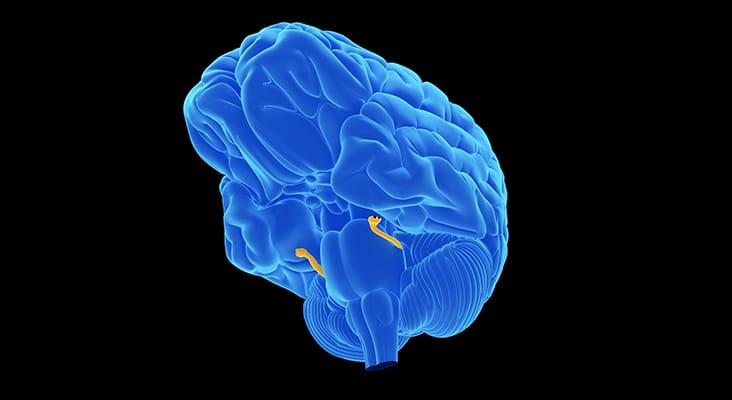Shingles Prevention
Shingles is a viral infection caused by reactivation of the varicella zoster virus (VZV). Approximately 1 million cases of shingles are diagnosed each year in the United States, and these numbers continue to rise.

Shingles is a viral infection caused by reactivation of the varicella zoster virus (VZV). Approximately 1 million cases of shingles are diagnosed each year in the United States, and these numbers continue to rise. The US Centers for Disease Control and Prevention (CDC) estimates that nearly one out of three people in the US will develop shingles in their lifetime. This condition typically affects individuals older than age 50. Symptoms may be extremely painful and can significantly interfere with daily activities. Oral health professionals may encounter an individual with shingles or be afflicted themselves and thus must be prepared to recognize the signs and symptoms of shingles, especially those appearing in and around the oral cavity.
Photo Credit: Evgeny Hailshadow / iStock / Getty Images Plus

Presentation
VZV is associated with chickenpox and shingles. Initial exposure to the virus results in chickenpox (varicella zoster). Chickenpox is a highly contagious childhood disease. Upon exposure, VZV is contracted via airborne or direct contact transmission, resulting in a rash that typically lasts 3 days to 4 days. The rash presents as pus-filled blisters appearing anywhere on the body. The vesicles will rupture and scab prior to healing.
Photo Credit: kadirkaplan / iStock / Getty Images Plus

Duration
The early signs and symptoms of shingles may include pain, itching, and burning prior to the appearance of the characteristic rash. When the rash appears, it begins as red spots and progresses to fluid-filled blisters. The virus follows nerve fibers that stem from the spinal column and affects the associated dermatome (the area of skin supplied by the nerve), resulting in a distribution of blisters on one side of the body. The rash usually progresses from the spine around to the front of the abdomen or chest, but may also involve the face, eyes, mouth, and ears. New blisters may continue to erupt over 3 days to 5 days. Scabbing of the blisters is an indication of healing and may occur within 2 weeks to 4 weeks.
Photo Credit: Mixmike / iStock / Getty Images Plus

Oral Signs and Symptoms
The trigeminal nerve innervates the teeth and other facial structures. Reactivation of VZV along this nerve presents a unique concern for oral health professionals because the lesions caused by a shingles outbreak may appear in the face and neck regions. Any of the three branches of the trigeminal nerve (maxillary, mandibular, or ophthalmic) may be affected during an occurrence of shingles.
Photo Credit: Eraxion / iStock / Getty Images Plus

Treatment
Shingles affects each individual differently. There is no cure, but treatments are available to shorten the duration of the condition and lessen the risk of complications. Prescription antiviral drugs, including acyclovir and valacyclovir, are frequently prescribed and should be administered as soon as possible.
Shingles can cause severe pain. Pain management options include several oral medications and over-the-counter analgesic treatments, including:
- Capsaicin topical patch
- Anticonvulsants, such as gabapentin
- Tricyclic antidepressants, such as amitriptyline
- Numbing agents, such as lidocaine, delivered via a cream, gel, spray, or skin patch
- Medications that contain narcotics (eg, codeine)
- Injections of corticosteroids and local anesthetics
Photo Credit: Pornpak Khunatorn / iStock / Getty Images Plus

Vaccines
Two vaccines are used to prevent shingles: Shingrix® and Zostavax®. Zostavax was introduced in 2006 and is administered as a single dose. The vaccine is composed of a live but weakened (attenuated) form of the herpes zoster virus. Administration of this weak form is designed to trigger immune response and subsequent protection without producing disease. The use of attenuated virus approximates the natural immune response resulting in long-term immunity. However, the consequence of utilizing a live virus includes the remote possibility the vaccination may result in disease. For this reason, Zostavax is contraindicated in those who are immunocompromised.
Photo Credit: Samara Heisz / iStock / Getty Images Plus

Role of Dental Hygienists
Oral health professionals may encounter patients with shingles. Patients identified with active lesions should not be treated in the dental office. Those with shingles should not be seen until all lesions have healed. Using an ultrasonic scaler or other aerosol-producing procedure could spread the virus to staff and other patients. A patient who presents with a blistering lesion whether on the body or in the oral region and is unaware of the cause should be referred to a physician for evaluation and treatment. Health care professionals with active chickenpox or shingles infection should discuss transmission risk with their health care provider. Recommendations may include avoiding contact with premature or low birthweight infants, immunocompromised individuals, or pregnant women with unknown immune status to VZV. Pregnant oral health professionals should consult with their physicians regarding a recommendation to avoid contact with patients who present with active VZV infection. The CDC provides comprehensive guidelines on preventing VZV transmission from herpes zoster in health care settings.

